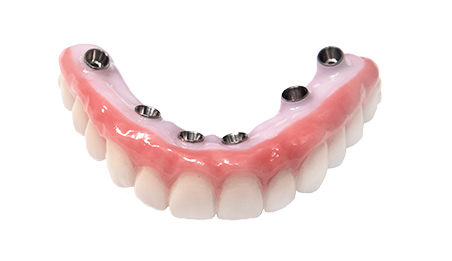Excitement About Dental Sense
What Does Dental Sense Do?
Table of ContentsThe Single Strategy To Use For Dental SenseThe Single Strategy To Use For Dental SenseThe 9-Second Trick For Dental SenseDental Sense Can Be Fun For Anyone
are clinical tools surgically dental implanted into the jaw to bring back an individual's capacity to eat or their appearance. They supply assistance for artificial (fake) teeth, such as crowns, bridges, or dentures. When a tooth is lost as a result of injury or illness, an individual can experience problems such as quick bone loss, malfunctioning speech, or changes to eating patterns that lead to discomfort.Dental implant systems contain a dental implant body and dental implant joint and may additionally consist of an abutment addiction screw. Professional teeth whitening. The dental implant body is operatively placed in the jawbone instead of the tooth's root. The dental implant abutment is typically affixed to the dental implant body by the joint addiction screw and expands via gums right into the mouth to sustain the connected artificial teeth
(https://www.callupcontact.com/b/businessprofile/Dental_Sense/9469240)Framework of The Oral Implant System picking dental implants, speak to your dental provider about the potential benefits and dangers, and whether you are a candidate for the treatment. Points to take into consideration: Your general wellness is an essential factor in determining whether you are a good prospect for dental implants, how much time it will certainly require to recover, and for how long the implant might stay in location.
Smoking cigarettes may impact the healing process and decrease the lasting success of the dental implant. The recovery process for the dental implant body may take numerous months or longer, during which time you typically have a short-term abutment in area of the tooth. the oral implant procedure: Very carefully follow the dental hygiene guidelines provided to you by your oral copyright.
4 Simple Techniques For Dental Sense
Implant failing can cause the requirement for one more procedure to repair or replace the implant system. Brings back the ability to chew Recovers aesthetic look Aids keep the jawbone from diminishing as a result of bone loss Protects the wellness of the surrounding bone and gum tissues Helps keep nearby (nearby) teeth stable Enhances quality of life Damages to bordering all-natural teeth throughout dental implant positioning Injury to the surrounding cells throughout surgical procedure, such as sinus perforation Injury during surgery (as an example, fracture of surrounding jawbone) Insufficient feature, such as seeming like the teeth do not bite together usually A feeling that the tooth is loose or turning in position arising from a joint screw loosening Implant body failure (looseness of the dental implant body) as a result of systemic infection, which might be most likely in clients with unrestrained diabetes because of regional infection in bone and gum tissues sustaining the dental implant body as a result of postponed recovery, which may be most likely in patients who smoke Trouble cleansing the gum tissues around the dental implant, resulting in bad oral hygiene Neglected periodontal disease Post-surgical feeling numb because of nerve impingement or damage Always notify health treatment suppliers and imaging service technicians that you have oral implants prior to any magnetic resonance imaging (MRI) or x-ray treatments.
FDA is not knowledgeable about any negative occasions reported for MRI or x-ray treatments with oral implants. Oral implants systems are usually made of materials that comply with international consensus criteria of the International Company for Standardization (ISO) or ASTM International. These requirements have details of what makes a secure material.

An oral implant is a framework that changes a missing tooth. With screw-like devices, the doctor inserts an implant right into the jawbone, and it acts as an anchor for a synthetic tooth, called a crown.
Everything about Dental Sense
Some people are not qualified for dental implant surgery. It is for dental doctors to operate on people with: intense illnessuncontrollable metabolic diseasebone or soft tissue illness or infectionIf these issues are settled, an individual can have the surgical treatment. In, oral cosmetic surgeons abstain from operating people with: If people with any of the above go through oral implant surgery, there is a higher threat of the implant falling short.

Oral dental implant surgical treatment is an individualized process. It's not the exact same for every person. The following offers a basic introduction of what you can expect your dental professional, dental surgeon, periodontist or prosthodontist to do: Put the dental implant surgically. Offer you time to recover. Affix the article and final crown, bridge or denture.
Next, your cosmetic surgeon will thoroughly put the dental implant into your jaw. If your implant is near the front of your mouth, your dentist will make a short-lived tooth for you to use till you recover.
The 4-Minute Rule for Dental Sense
Your copyright can tell you what to anticipate in your scenario. Throughout the recovery phase, your jawbone ought to fuse to the dental implant. This process, called osseointegration, is vital for security and long-lasting success. This procedure can take anywhere from 3 to nine months. In some cases, it may take much longer.
As soon as your dental implant heals, your dental practitioner can attach the abutment (tiny connector blog post) and your final remediation (crown, bridge or denture). This normally takes about one hour to finish and may call for a 2nd minor surgical procedure. You should not feel any type of discomfort during your oral implant procedure since your service provider will utilize medicine to numb your gums.